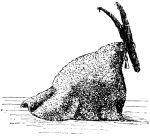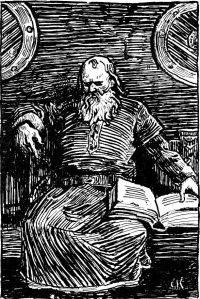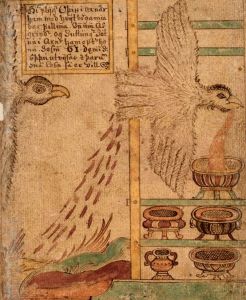 I did consider trying to find something else to tell you about today, as this is already well-trodden ground, particularly on the internet, but today is the anniversary of the Roswell Incident. On this day in 1947, the crashed wreckage of something was found on a ranch near Roswell, New Mexico. It was reported to the Sheriff’s office, who notified the military. They came and picked it up and took it away. At first it was reported that a ‘flying disc’ had been recovered, which was a bit mysterious. But the military announced that what had been recovered was a weather balloon. Years of speculation have led many to believe that it was a bit more that that. And it was. In the 1990s, the military admitted that they had been using weather balloons, with surveillance equipment attached. They were trying to find out if the Russians had developed and were testing a nuclear weapon and were hoping to pick up disturbances in the atmosphere that would tell them if that had happened. The equipment included a radar reflector, made from thin metal foil, which was used to track the balloon and the balloon itself would have probably been made from neoprene, a sort of synthetic rubber. It was a very secret project named ‘Project Mogul’. The balloons did detect the first Russian nuclear bomb in 1949, but the project was shelved in 1950. As a secretive method of surveillance, a massive balloon wasn’t really all that successful. A colonel, who had been in charge of the project said: “It was like having an elephant in your back yard and hoping no one would notice it.”
I did consider trying to find something else to tell you about today, as this is already well-trodden ground, particularly on the internet, but today is the anniversary of the Roswell Incident. On this day in 1947, the crashed wreckage of something was found on a ranch near Roswell, New Mexico. It was reported to the Sheriff’s office, who notified the military. They came and picked it up and took it away. At first it was reported that a ‘flying disc’ had been recovered, which was a bit mysterious. But the military announced that what had been recovered was a weather balloon. Years of speculation have led many to believe that it was a bit more that that. And it was. In the 1990s, the military admitted that they had been using weather balloons, with surveillance equipment attached. They were trying to find out if the Russians had developed and were testing a nuclear weapon and were hoping to pick up disturbances in the atmosphere that would tell them if that had happened. The equipment included a radar reflector, made from thin metal foil, which was used to track the balloon and the balloon itself would have probably been made from neoprene, a sort of synthetic rubber. It was a very secret project named ‘Project Mogul’. The balloons did detect the first Russian nuclear bomb in 1949, but the project was shelved in 1950. As a secretive method of surveillance, a massive balloon wasn’t really all that successful. A colonel, who had been in charge of the project said: “It was like having an elephant in your back yard and hoping no one would notice it.”
Earliest reports of the wreckage described strips of rubber, tin foil, paper and sticks. A lot of the what-ever-it-was had been fastened together with Scotch tape. Some of the tape had flowers printed on it. The material that was collected from the crash site weighed about 5 lb. There were no large pieces of metal, nothing that indicated it might have had an engine. It was bits of a balloon that had had something fastened to it. No one thought much more about it until around 1978.
Between 1978 and 1990, UFO researches interviewed hundreds of people who claimed to had a connection to the event at Roswell. They also received documents that supposedly contained secret information leaked by insiders. A document known as ‘Majestic 12’ claimed that an alien spaceship had crashed and that alien technology had been recovered that could be exploited. Then someone who claimed to be connected to the case said that there had been alien beings on the ship and promised footage of an interview with one of them. Nothing materialised. Majestic 12 is now widely thought of as a forgery, but it was the beginning of a really good story. People were fascinated by the thought that we could have been visited by beings from another planet and that the whole thing had been hushed up by the government. Books were written on the subject and a wild and unsubstantiated rumour amongst a few people moved into the mainstream consciousness.
 In version one of the story, ‘The Roswell Incident’ published in 1980, a spaceship was struck by lightening and crashed in the desert, killing the aliens. The whole thing was covered up by the government. Some archaeology students, from an unidentified university, saw the crash site and the bodies. The material recovered was not a balloon but some strange, new, super-strong material. A photograph of the rancher posing with the recovered material had been faked. Witnesses had been hushed up. It was a popular book and others started to come up with their own versions.
In version one of the story, ‘The Roswell Incident’ published in 1980, a spaceship was struck by lightening and crashed in the desert, killing the aliens. The whole thing was covered up by the government. Some archaeology students, from an unidentified university, saw the crash site and the bodies. The material recovered was not a balloon but some strange, new, super-strong material. A photograph of the rancher posing with the recovered material had been faked. Witnesses had been hushed up. It was a popular book and others started to come up with their own versions.
By 1991, in a book called ‘UFO crash at Roswell’, a second crash site had been added to the story. The whole area had been crawling with military police trying to keep people away. Shortly after that, the story of three alien bodies being held at the Roswell Army Air Base emerged. It was the start of the ‘alien autopsy’ thread. This was followed up by a purported film of the autopsies. Its maker has since admitted that he faked to footage using rubber models, chicken entrails, sheep’s brains and raspberry jam. The following year, another book was published which claimed there had been two flying saucers and eight aliens, two of whom had survived.
In 1997, a book called ‘The Day After Roswell’ was published by a former army officer, Philip J Corso. He claimed to have seen the alien bodies from Roswell stowed in crates and that later, he was given material from the crash site. His job was to reverse engineer the objects he was given, so that alien technology could be exploited for corporate use. He claimed to have found technology which helped with the development of lasers, fibre optics, bullet-proof vests and microchips. Again, a fascinating story, but it seriously undervalues the work of all the scientists who actually worked very hard, over years and years to develop those things. There was one piece of equipment though, that he claimed he could do nothing with. It was a helmet that he believed the aliens had used to steer the ship telepathically. Recently, our scientists have come up with a way of controlling a computer directly from the brain. One day, it will be brilliant for people who are paralysed. They will be able to control their wheelchairs, switch on the TV, use a computer. And we’ve done that all by ourselves, with no help at all from Philip Corso.
Human beings are clever. I think it’s wrong to underestimate our ingenuity. I don’t think we needed outside help with our technology, any more than I think the ancient Egyptians needed alien advice when they built their pyramids. We are an inventive and curious people and we always have been. We are good at making objects and we are also good at making stories. What we probably have at Roswell, which is most interesting to me, is the birth of a legend.
It makes me think about the two completely separate lives of Roger Bacon, one real and one imagined. It makes me think about the Trojan War. It was fought by the gods and the children of gods and was thought to be just a legend. But now there is some archaeological evidence that it may actually have happened. There must have been years and years of people retelling the story, half remembering things, adding bits to make it more exciting. Conspiracy theories like Roswell are probably just no more than modern myths that fulfil our need for wild stories. We have no exciting pantheon of gods now, no Prometheus to bring us fire. We have aliens who bring us microchips and lasers.
 Today I am investigating tomatoes. Is a tomato a fruit or a vegetable? Common sense tells me that it is a fruit, but it really depends on how you define those two things. I also want to look at why people once thought tomatoes were evil, but more of that shortly. Botanically, a fruit is the fertilized ovum of a flower, which contains seeds. While that doesn’t make it sound very appetizing, it certainly describes a tomato. Yet on this day in 1893, the United States Government declared it to be, legally, a vegetable.
Today I am investigating tomatoes. Is a tomato a fruit or a vegetable? Common sense tells me that it is a fruit, but it really depends on how you define those two things. I also want to look at why people once thought tomatoes were evil, but more of that shortly. Botanically, a fruit is the fertilized ovum of a flower, which contains seeds. While that doesn’t make it sound very appetizing, it certainly describes a tomato. Yet on this day in 1893, the United States Government declared it to be, legally, a vegetable.
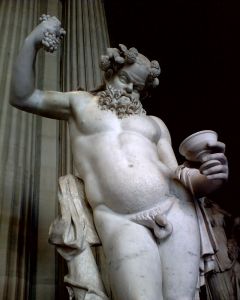 Well, today has been difficult. I have spent most of the day researching a person only to find that Wikipedia had lied to me about a date. Never mind, I didn’t really like him anyway. But, by happy chance I’ve also spent part of the day talking with a friend about a character from Greek Myth called Silenus. He was much more fun, so I’m going to tell you about him instead.
Well, today has been difficult. I have spent most of the day researching a person only to find that Wikipedia had lied to me about a date. Never mind, I didn’t really like him anyway. But, by happy chance I’ve also spent part of the day talking with a friend about a character from Greek Myth called Silenus. He was much more fun, so I’m going to tell you about him instead.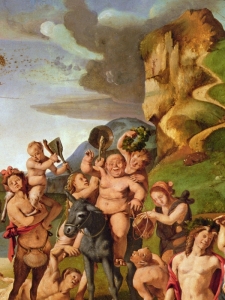 Remarkably, he is also very wise. When intoxicated, which as I mentioned is all the time, he possesses special knowledge and the power of prophecy. His favourite things are wine, music and sleep. If you can catch him sleeping and surround him with flowers or chains, he would be under your spell and he might sing for you, tell you a story or foretell your future. That is probably how he came to be at the court of King Midas. Either Midas tempted him with a fountain full of wine, so that he drank it and went to sleep, or some shepherds found him, put a crown of flowers on him and brought him to the king.
Remarkably, he is also very wise. When intoxicated, which as I mentioned is all the time, he possesses special knowledge and the power of prophecy. His favourite things are wine, music and sleep. If you can catch him sleeping and surround him with flowers or chains, he would be under your spell and he might sing for you, tell you a story or foretell your future. That is probably how he came to be at the court of King Midas. Either Midas tempted him with a fountain full of wine, so that he drank it and went to sleep, or some shepherds found him, put a crown of flowers on him and brought him to the king. In the UK, we only have one Santa Claus, who brings gifts to good children on December 25th, but in Iceland there are thirteen Christmas Trolls called the Yule Lads. Today, children in Iceland can expect a visit from the first of the Yule Lads. They will have left their shoes on the windowsill before going to bed. In the morning, if they were good yesterday, they will find sweets or a small gift. If they were bad, they will find a rotten potato.
In the UK, we only have one Santa Claus, who brings gifts to good children on December 25th, but in Iceland there are thirteen Christmas Trolls called the Yule Lads. Today, children in Iceland can expect a visit from the first of the Yule Lads. They will have left their shoes on the windowsill before going to bed. In the morning, if they were good yesterday, they will find sweets or a small gift. If they were bad, they will find a rotten potato.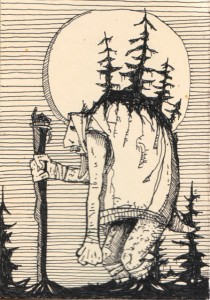 On December 12th, you can expect a visit from Stekkjarstaur, whose name is translated as Sheep Cote Clod. This is bad news if you keep sheep because he will hang around trying to steal the milk from their udders. Luckily, he has difficulty doing this because he had stiff legs and can’t bend down very well. On subsequent days, you can expect visits from trolls who will steal milk from the dairy, scrape out all your pans, lick all your spoons, steal your leftovers and take the pot of food that you have hidden under your bed for later. The seventh visitor will be Door Slammer, who obviously likes to loudly slam all your doors, especially at night. After that you will find that you have been visited by a troll who has eaten all your skyr, which is a bit like yoghurt and very precious indeed. Then you need to look out for the Sausage Swiper. He will sit in your rafters and try to steal the smoked sausages that you have hanging there. Worryingly, your tenth unwelcome guest will be the Window Peeper. Not only will he look through your windows looking for something to steal, he might want to watch you while you get undressed for bed too. Perhaps the weirdest of the thirteen though, appears on the eleventh night. He has an enormous nose and his name is Doorway Sniffer. Next comes Meat Hook. He has a pretty scary name, but what he does is sit in your chimney and reach down with his hook to steal the meat that you are smoking there. If you are lucky, his hook will not be long enough. The final visitor is Kertasníkir, Candle Stealer. As there was once a time when candles were the only available light in the dark winter, they were extremely important. For a child to lose their candle to Kertasníkir was a terrible thing. I don’t think trolls need light particularly, but those candles would have been made of tallow, which is animal fat. So he probably wants to eat them.
On December 12th, you can expect a visit from Stekkjarstaur, whose name is translated as Sheep Cote Clod. This is bad news if you keep sheep because he will hang around trying to steal the milk from their udders. Luckily, he has difficulty doing this because he had stiff legs and can’t bend down very well. On subsequent days, you can expect visits from trolls who will steal milk from the dairy, scrape out all your pans, lick all your spoons, steal your leftovers and take the pot of food that you have hidden under your bed for later. The seventh visitor will be Door Slammer, who obviously likes to loudly slam all your doors, especially at night. After that you will find that you have been visited by a troll who has eaten all your skyr, which is a bit like yoghurt and very precious indeed. Then you need to look out for the Sausage Swiper. He will sit in your rafters and try to steal the smoked sausages that you have hanging there. Worryingly, your tenth unwelcome guest will be the Window Peeper. Not only will he look through your windows looking for something to steal, he might want to watch you while you get undressed for bed too. Perhaps the weirdest of the thirteen though, appears on the eleventh night. He has an enormous nose and his name is Doorway Sniffer. Next comes Meat Hook. He has a pretty scary name, but what he does is sit in your chimney and reach down with his hook to steal the meat that you are smoking there. If you are lucky, his hook will not be long enough. The final visitor is Kertasníkir, Candle Stealer. As there was once a time when candles were the only available light in the dark winter, they were extremely important. For a child to lose their candle to Kertasníkir was a terrible thing. I don’t think trolls need light particularly, but those candles would have been made of tallow, which is animal fat. So he probably wants to eat them.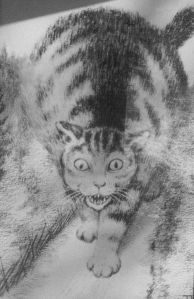 Grýla and the Yule Lads do not live alone in the mountains. Grýla has a husband called Leppalúði, who seems to be basically just a bit lazy and stupid. He is her third husband, she ate the other two. They also have a cat. As you might expect, the cat is also not very nice. You may spot the Yule Cat lurking about on December 24th. It is looking for people who have not received any new clothes to wear before Christmas Eve. If it finds someone, it will eat them. The threat of being eaten by the Yule Cat was extremely useful to farmers who were trying to get their workers to finish processing that year’s wool before Christmas Day.
Grýla and the Yule Lads do not live alone in the mountains. Grýla has a husband called Leppalúði, who seems to be basically just a bit lazy and stupid. He is her third husband, she ate the other two. They also have a cat. As you might expect, the cat is also not very nice. You may spot the Yule Cat lurking about on December 24th. It is looking for people who have not received any new clothes to wear before Christmas Eve. If it finds someone, it will eat them. The threat of being eaten by the Yule Cat was extremely useful to farmers who were trying to get their workers to finish processing that year’s wool before Christmas Day.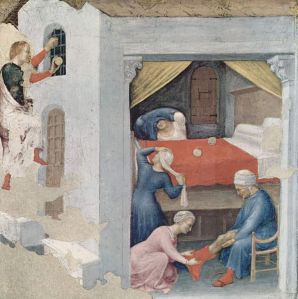 Today is the feast day of Saint Nicholas who was made Bishop of Myra, then in Greece, now in Turkey, in 317 AD. Since then he’s had a few name changes and a bit of a makeover. From being ‘Saint Nikolaos’, he became, in the Netherlands, ‘Sinterklaas’ and from there ‘Santa Claus’.
Today is the feast day of Saint Nicholas who was made Bishop of Myra, then in Greece, now in Turkey, in 317 AD. Since then he’s had a few name changes and a bit of a makeover. From being ‘Saint Nikolaos’, he became, in the Netherlands, ‘Sinterklaas’ and from there ‘Santa Claus’.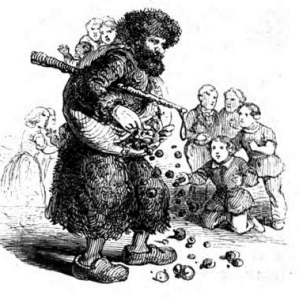 In another tale, there was a terrible famine in Myra. An evil butcher lured three children into his home, killed them, chopped them up and put their bodies in a barrel with some salt. He intended to sell their remains as ham. But luckily, Saint Nicholas found out about it and brought the children back to life and they were returned to their homes. This is how he gained his reputation as a protector of children. In France, the story goes that the evil butcher had to follow the saint in penance and he became Père Fouettard who doles out lumps of coal or beatings to children who have been naughty. In Germany, his servant is called Knecht Rupecht, a figure clad in brown or black who will check that children know how to say their prayers. If not, he will beat them or shake a bag of ashes at them. In Austria, of course, they have
In another tale, there was a terrible famine in Myra. An evil butcher lured three children into his home, killed them, chopped them up and put their bodies in a barrel with some salt. He intended to sell their remains as ham. But luckily, Saint Nicholas found out about it and brought the children back to life and they were returned to their homes. This is how he gained his reputation as a protector of children. In France, the story goes that the evil butcher had to follow the saint in penance and he became Père Fouettard who doles out lumps of coal or beatings to children who have been naughty. In Germany, his servant is called Knecht Rupecht, a figure clad in brown or black who will check that children know how to say their prayers. If not, he will beat them or shake a bag of ashes at them. In Austria, of course, they have 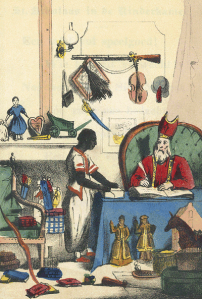 This brings us to Sinterklaas’s servant, or servants, Zwarte Piet (Black Peter) who listens at chimneys to find out if children have been good or bad. The Zwarte Pieten sport colourful seventeenth century costumes, complete with lace collar and, controversially, blacked faces. They carry a sack with candy for the good children and a birch rod for the naughty ones. If you’ve been really bad, they might put you in the sack and take you back to Spain. I first heard about this story from David Sedaris in his story ‘
This brings us to Sinterklaas’s servant, or servants, Zwarte Piet (Black Peter) who listens at chimneys to find out if children have been good or bad. The Zwarte Pieten sport colourful seventeenth century costumes, complete with lace collar and, controversially, blacked faces. They carry a sack with candy for the good children and a birch rod for the naughty ones. If you’ve been really bad, they might put you in the sack and take you back to Spain. I first heard about this story from David Sedaris in his story ‘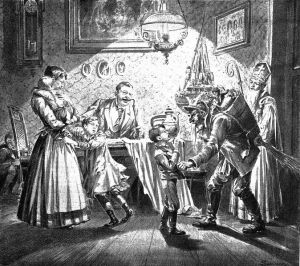 December 5th is Krampusnacht. In parts of Europe, December 6th is the feast day of Saint Nicholas, otherwise known as Father Christmas. In Alpine countries, the night of December 5th is dedicated to his very scary companion, Krampus, whose name means ‘claw’. He is the anti-Santa. While Saint Nicholas rewards good children with presents, Krampus will visit the children who have been bad. He will either drown them, eat them or perhaps drag them off to Hell.
December 5th is Krampusnacht. In parts of Europe, December 6th is the feast day of Saint Nicholas, otherwise known as Father Christmas. In Alpine countries, the night of December 5th is dedicated to his very scary companion, Krampus, whose name means ‘claw’. He is the anti-Santa. While Saint Nicholas rewards good children with presents, Krampus will visit the children who have been bad. He will either drown them, eat them or perhaps drag them off to Hell.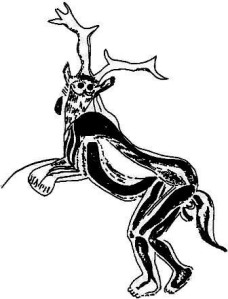 It’s pretty obvious that he is some sort of demonic figure and his chains may represent the binding of the Devil by the Christian Church. His origins are really unknown and he probably represents a Pagan god dating back to pre-Christian times who has been assimilated into the Christian Devil. Gods with horns were pretty important to our ancestors. Go back to 200BC – 300BC and you’ll find Cernunnos, the Celtic horned god. Go back a little further, to around 500BC and you’ll find the first mentions of the Greek god Pan. There is even a cave painting found in France which shows a human figure with horns. It dates back to around 13,000BC. Horned figures have been with us for a very long time and they’re probably not going away any time soon.
It’s pretty obvious that he is some sort of demonic figure and his chains may represent the binding of the Devil by the Christian Church. His origins are really unknown and he probably represents a Pagan god dating back to pre-Christian times who has been assimilated into the Christian Devil. Gods with horns were pretty important to our ancestors. Go back to 200BC – 300BC and you’ll find Cernunnos, the Celtic horned god. Go back a little further, to around 500BC and you’ll find the first mentions of the Greek god Pan. There is even a cave painting found in France which shows a human figure with horns. It dates back to around 13,000BC. Horned figures have been with us for a very long time and they’re probably not going away any time soon.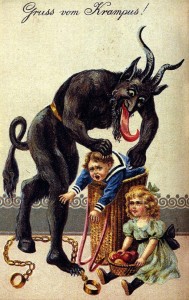 In some parts of Europe, people have exchanged Krampus greetings cards since the 1800s. Sometimes they picture him looming over bad children and sometimes the images have sexual overtones and show him running after young women. He often has one human foot and one cloven hoof. He might be celebrated with ‘Krampuslauf’ which is a run of celebrants dressed as Krampus which is often fuelled by alcohol. Don’t think that this is a ‘men only’ event though. Krampus has a female counterpart.
In some parts of Europe, people have exchanged Krampus greetings cards since the 1800s. Sometimes they picture him looming over bad children and sometimes the images have sexual overtones and show him running after young women. He often has one human foot and one cloven hoof. He might be celebrated with ‘Krampuslauf’ which is a run of celebrants dressed as Krampus which is often fuelled by alcohol. Don’t think that this is a ‘men only’ event though. Krampus has a female counterpart. 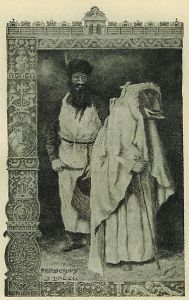 There is an Alpine goddess called Perchta who might turn up sometime over the Christmas period to check we have all done enough weaving and spinning. If we have, she will leave a silver coin in our shoe. If we haven’t, she will slit open our bellies, rip out our guts and replace them with straw and pebbles. Which seems a bit harsh.
There is an Alpine goddess called Perchta who might turn up sometime over the Christmas period to check we have all done enough weaving and spinning. If we have, she will leave a silver coin in our shoe. If we haven’t, she will slit open our bellies, rip out our guts and replace them with straw and pebbles. Which seems a bit harsh.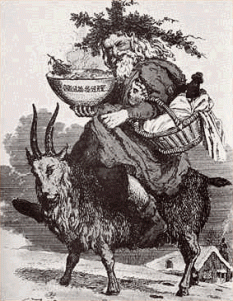 arrive in your home to check that you were making the correct preparations for the festival of Yule. It used to be a popular Christmas prank to fashion a crudely shaped goat and secretly place it somewhere in your friends house. Once they found it, they would have to pass it on in the same manner. If you’ve any doubt that Santa still has these associations, take a look at his reindeer. Also Father Christmas is Saint Nick, the devil is Old Nick. There’s got to be something there right? Have we all been good this year? I hope so.
arrive in your home to check that you were making the correct preparations for the festival of Yule. It used to be a popular Christmas prank to fashion a crudely shaped goat and secretly place it somewhere in your friends house. Once they found it, they would have to pass it on in the same manner. If you’ve any doubt that Santa still has these associations, take a look at his reindeer. Also Father Christmas is Saint Nick, the devil is Old Nick. There’s got to be something there right? Have we all been good this year? I hope so.